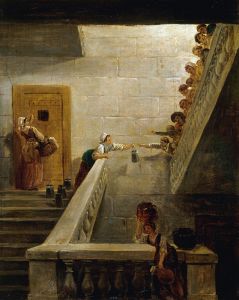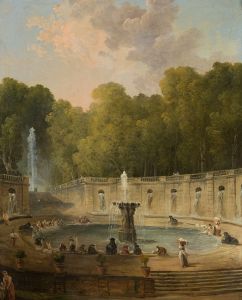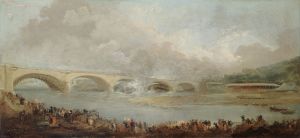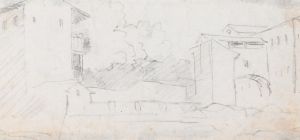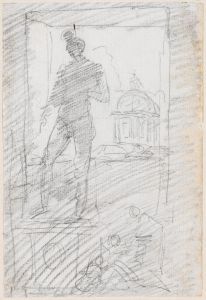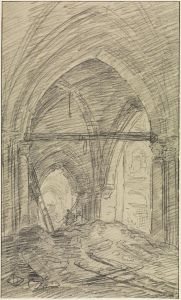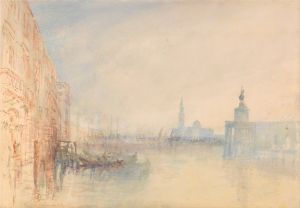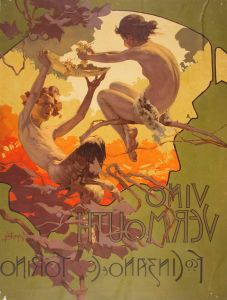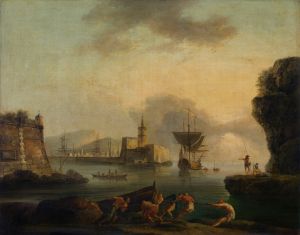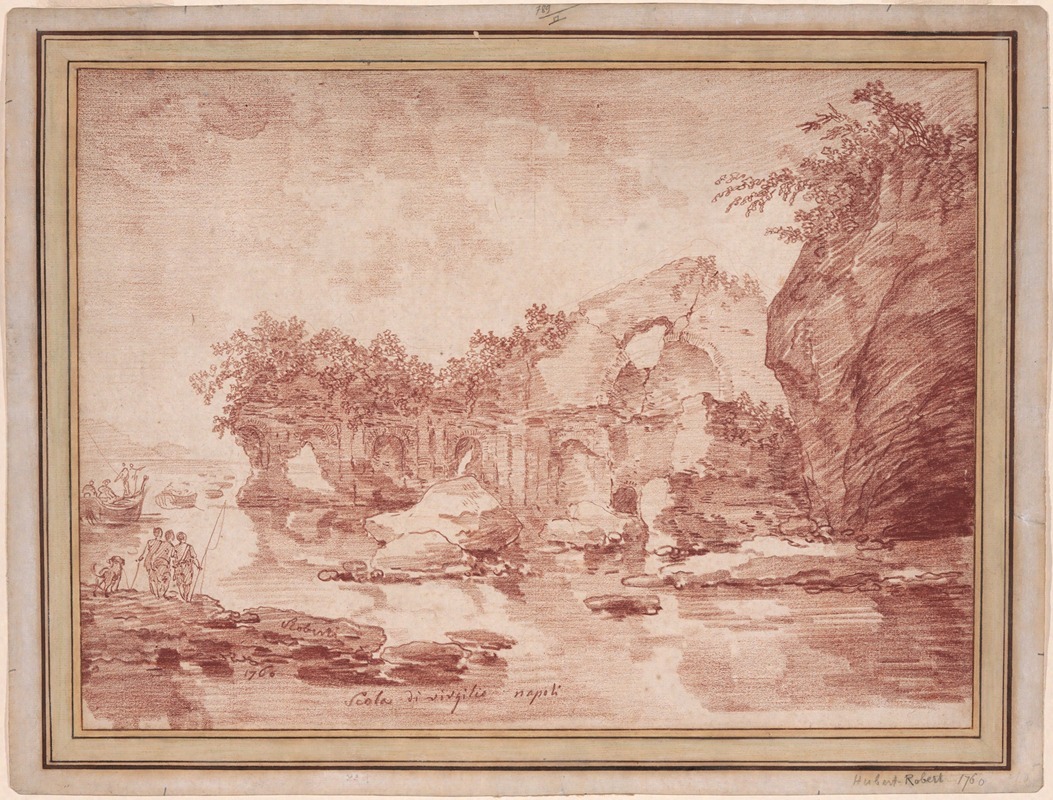
Ruins at the Sea Near Naples; the ‘Scola di Virgilio’
A hand-painted replica of Hubert Robert’s masterpiece Ruins at the Sea Near Naples; the ‘Scola di Virgilio’, meticulously crafted by professional artists to capture the true essence of the original. Each piece is created with museum-quality canvas and rare mineral pigments, carefully painted by experienced artists with delicate brushstrokes and rich, layered colors to perfectly recreate the texture of the original artwork. Unlike machine-printed reproductions, this hand-painted version brings the painting to life, infused with the artist’s emotions and skill in every stroke. Whether for personal collection or home decoration, it instantly elevates the artistic atmosphere of any space.
"Ruins at the Sea Near Naples; the ‘Scola di Virgilio’" is a painting by the renowned French artist Hubert Robert, who is celebrated for his evocative landscapes and depictions of ruins. Born in 1733, Robert became known as "Robert des Ruines" due to his fascination with ancient architecture and his skill in capturing the romantic decay of historical structures. His works often blend real and imagined elements, creating scenes that evoke a sense of nostalgia and grandeur.
This particular painting, "Ruins at the Sea Near Naples; the ‘Scola di Virgilio’," is a fine example of Robert's ability to blend natural and architectural beauty. The painting depicts a coastal scene near Naples, Italy, featuring ancient ruins that are partially submerged in the sea. The title refers to the "Scola di Virgilio," which is associated with the Roman poet Virgil, although the exact historical reference of the term "Scola di Virgilio" is not clearly defined in historical texts.
In the painting, Robert captures the serene yet dramatic atmosphere of the ruins against the backdrop of the sea. The composition is characterized by its use of light and shadow, which highlights the textures of the crumbling stone and the gentle movement of the water. The ruins themselves are depicted with a sense of grandeur, suggesting their former glory while emphasizing their current state of decay. This juxtaposition is a hallmark of Robert's work, reflecting the 18th-century European fascination with the sublime and the picturesque.
The painting is also notable for its atmospheric perspective, a technique Robert employed to create depth and distance in his landscapes. The use of muted colors and soft brushstrokes adds to the dreamlike quality of the scene, inviting viewers to contemplate the passage of time and the transient nature of human achievements.
Hubert Robert's time in Italy, particularly his stay in Rome from 1754 to 1765, greatly influenced his artistic style. During this period, he was exposed to the ruins of ancient Rome and the works of other artists who were part of the Grand Tour, a traditional trip through Europe undertaken by young aristocrats to complete their education. This exposure deeply informed his artistic vision, as seen in "Ruins at the Sea Near Naples; the ‘Scola di Virgilio’."
The painting is a testament to Robert's skill in capturing the essence of a place and moment, blending historical reverence with artistic imagination. His works, including this painting, continue to be celebrated for their ability to transport viewers to a world where nature and history intertwine, evoking a sense of wonder and reflection.
"Ruins at the Sea Near Naples; the ‘Scola di Virgilio’" remains an important piece within Hubert Robert's oeuvre, exemplifying his mastery of the ruin genre and his contribution to the development of landscape painting in the 18th century.






